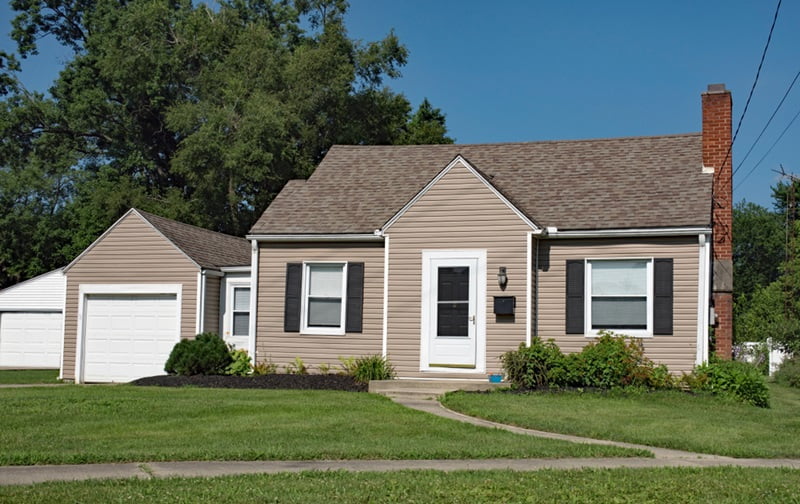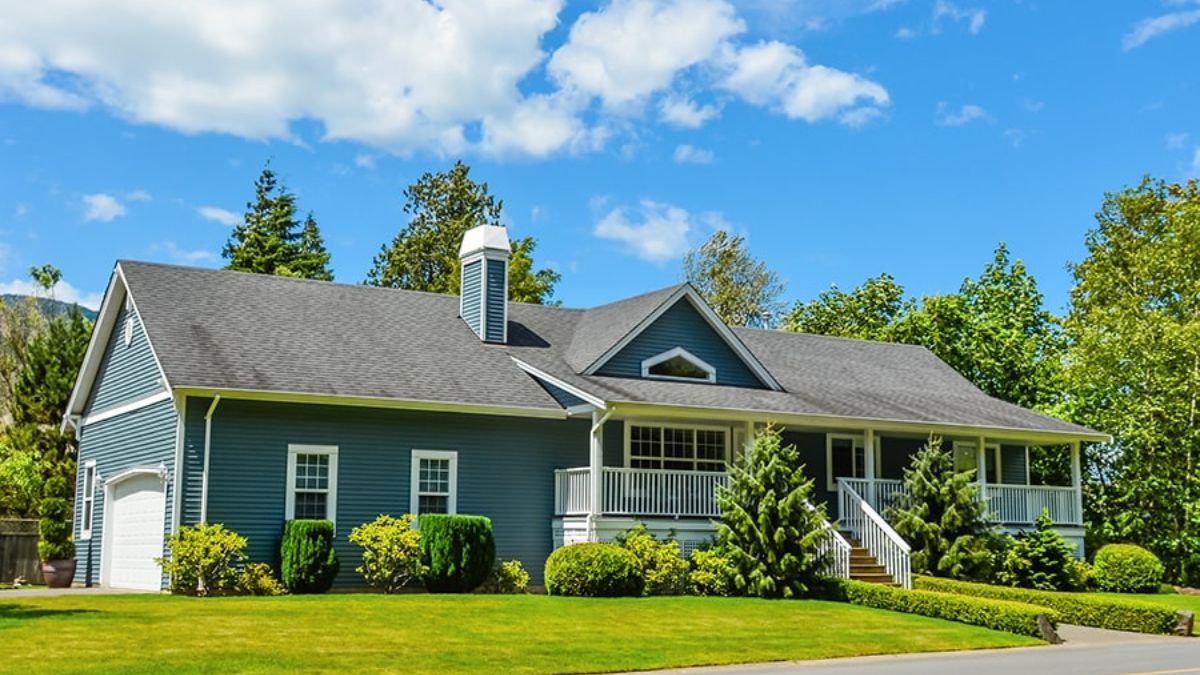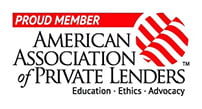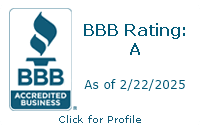USDA Rural Development supports rural areas across the United States. In Virginia, the program focuses on loans that solve specific issues encountered by rural populations. These loans promote affordable housing, boost economic growth through company finance, and improve community infrastructure such as schools and healthcare facilities.
Virginians in rural locations benefit from the program’s cheap interest rates, flexible qualifying requirements, and higher quality of life. USDA Rural Development Loans help rural communities in Virginia thrive economically and improve their general well-being, making them an ideal resource for people looking for long-term solutions.
Table of Contents
ToggleUnderstanding USDA Loans
A USDA loan is a type of home financing that is backed by the U.S. Department of Agriculture, specifically aimed at fostering growth in rural communities. Its primary purpose is to assist low- to moderate-income families in purchasing homes outside urban areas.
Key Features of USDA Loans:
- No Down Payment Required: Unlike conventional loans that typically demand a down payment, USDA loans offer the advantage of financing the entire purchase price without any initial out-of-pocket expense.
- Special Program for Rural Development: Initiated in 1991, the Single Family Housing Guaranteed Loan program was created to make homeownership accessible to those who might find city living unaffordable. This program helps individuals and families willing to reside in less densely populated areas.
- Cost Considerations: While the absence of a down payment is beneficial, borrowers should be prepared to cover closing costs. In addition, there are annual and upfront guarantee fees associated with these loans. These fees serve to offset administrative expenses and reduce financial risks for lenders.
USDA loans have become a popular choice for those looking to purchase a home in rural regions, offering a feasible path to home ownership without the barrier of a significant down payment.
Who is eligible for USDA rural development loans Virginia?
Specific USDA requirements were created to ensure that the program effectively benefits rural populations and determine who is eligible for USDA Rural Development Loans Virginia. Income constraints, geographical criteria, and loan programs customized for certain populations are among the most critical qualifying conditions.
Income restrictions
The USDA establishes income restrictions to evaluate eligibility for rural development loans. These restrictions vary depending on family size and the county or location in Virginia. Prospective borrowers must fulfill certain income requirements to be eligible for financial assistance.
In Virginia, applicants cannot earn more than 15% above their area’s median income. The specific income limits vary by county. For instance, the typical cap is about $114,450 per year for a family of four and $151,050 for families of five or more. These figures can fluctuate based on local economic conditions.
When applying for a USDA loan, be prepared to provide detailed income documentation. This ensures that your financial status aligns with the USDA’s eligibility criteria, paving the way for potential approval and support in achieving homeownership in rural areas.
Location requirements
The program is intended to help individuals in rural regions, and eligibility is closely tied to property location. The USDA determines which regions are eligible for rural development loans based on population density and other criteria. Eligible places are usually rural and suburban areas rather than metropolitan centers.
To qualify as a USDA eligible area, a location must meet the U.S. Department of Agriculture’s definition of “rural.” This typically means the area has a population of less than 20,000. For those interested in checking if a specific area qualifies, the USDA provides eligibility maps. These resources are invaluable for verifying whether a region meets the necessary criteria for rural development loans.
By understanding these requirements, potential applicants can better assess their eligibility and take advantage of the benefits offered by these programs.
Loan programs for distinct populations
The USDA offers a variety of loan programs aimed at distinct populations in rural areas. For example:
Single Family Housing Direct Home Loans
This program, designed for poor and extremely low-income households, offers inexpensive home loans directly from the USDA.
Single Family Housing Guaranteed Loan Program
This program helps moderate-income households by guaranteeing loans from licensed lenders, making homeownership more affordable.
Youth Loans for Young Farmers
The USDA offers loans to help the next generation of agricultural producers begin and improve their farming enterprises.
These tailored loan programs demonstrate the USDA’s commitment to meeting diverse groups’ needs in Virginia’s rural regions. USDA Rural Development Loans seek to offer comprehensive support to a diverse variety of individuals and families in rural Virginia. This is done by personalizing aid to certain income levels, age groups, and industries.
Apply For Financing
Eligibility Requirements for a USDA Loan in Virginia
Securing a USDA loan in Virginia involves meeting specific criteria that ensure the borrower and property align with USDA guidelines. Here’s a detailed look at what you need to qualify:
- Income Standards:
Your household income should be stable and within a particular range. Specifically, it cannot exceed 15% above the median income for your locality. This ensures the program supports those it’s designed to help—middle to low-income families. - Residency and Citizenship:
Eligibility for a USDA loan requires U.S. Citizenship or being a permanent resident. This ensures that the program benefits those established within the community. - Mortgage Insurance Requirement:
These loans necessitate mortgage insurance, helping to protect lenders while making homeownership more accessible for buyers without a substantial down payment. - Primary Residential Property in Rural Areas:
The property you wish to purchase must be situated in a designated rural location and serve as your main residence. This condition excludes vacation homes or investment properties from USDA loan eligibility.
Meeting these criteria could open the door to a USDA loan, offering the advantage of no down payment and often more favorable interest rates compared to standard loans.
What Are the Specific USDA Loan Requirements for Virginia Borrowers?
Navigating the USDA loan requirements in Virginia involves understanding several key criteria:
- Income Limits: Your income must not exceed 15% above the median income in your area. Additionally, proof of consistent employment is necessary to qualify.
- Residency Status: Only U.S. Citizens or permanent residents are eligible to apply for a USDA loan.
- Mortgage Insurance Requirement: USDA loans come with a mandatory mortgage insurance component, which helps safeguard the lender.
- Property Location and Use: The property must be situated in a designated rural area and serve as your primary residence. Vacation homes or investment properties do not qualify.
If these conditions align with your situation, a USDA loan could be a strategic financing choice. These loans typically do not require a down payment and often offer competitive interest rates compared to conventional mortgage options.
Types of USDA Rural Development Loans Available in Virginia
USDA Rural Development’s Single Family Housing Direct Home Loans program is intended to help poor and extremely low-income households in rural Virginia realize their homeownership dreams. This effort attempts to enhance rural people’s quality of life by providing inexpensive housing loans directly from the USDA.
Key features:
Single Family Housing Direct Home Loans
USDA Rural Development’s Single Family Housing Direct Home Loans program aims to help low- and very-low-income households in rural Virginia become homeowners. This program provides affordable housing options for people who may not be eligible for conventional financing. Key advantages of this program include low interest rates, flexible repayment terms, and no down payment. The USDA directly funds the loans, making them available to families with minimal financial means.

The program offers low interest rates and flexible repayment terms, making homeownership more feasible for qualifying families. Furthermore, the USDA provides various repayment options to meet borrowers’ financial needs.
Rural Housing Site Loans
The Rural Homes Site Loans program supports the acquisition and development of property for homes in rural Virginia. This effort is critical to providing more housing alternatives in underprivileged communities.
Loan Types (Sections 523-524)
This program offers two types of loans
Section 523 Loans: These loans help people buy land for their homes.
Section 524 loans are used to build housing sites
Both loan types aim to address various parts of rural communities’ housing requirements, offering full assistance throughout the land purchase and development process.
Community Facility Loans and Grants
The Community Facilities Loans and Grants program aims to improve vital community facilities, including schools and hospitals, in rural Virginia. This effort promotes rural communities’ general well-being and growth by providing critical infrastructure.
This program provides loans and grants for qualified projects. Financial help can help build, renovate, or expand critical facilities. USDA’s commitment to sustainable development in rural regions and improving access to essential services.
Benefits of USDA Rural Development Loans
1. Lower Interest Rates:
USDA Rural Development Loans offer lower interest rates than traditional lenders. This advantage makes homeownership and other rural development initiatives more affordable for individuals and communities in rural Virginia.
2. Flexible Repayment Terms and Options
Borrowers benefit from flexible repayment terms and options, allowing them to choose a plan that aligns with their financial capabilities. Flexibility is crucial to accommodating diverse economic situations in rural communities.
3. No Down Payment Required for Certain Programs
Some USDA Rural Development Loan programs do not require a down payment, eliminating a significant financial barrier for prospective homeowners. This feature increases accessibility to homeownership for individuals who may face challenges saving for a traditional down payment.
4. Grant Opportunities for Community Development Projects
In addition to loans, USDA Rural Development provides grant opportunities for community development projects. These grants contribute to the improvement of essential facilities, such as schools and hospitals, fostering rural communities’ overall well-being.
5. Support for Rural Revitalization and Economic Growth
USDA Rural Development Loans actively support rural revitalization and economic growth. By providing financial assistance for housing, infrastructure, and community facilities, these programs contribute to rural areas’ development and sustainability. This enhances residents’ quality of life.
Disadvantages and Considerations of USDA Rural Development Loans
6. Geographical Restrictions
A significant consideration for USDA Rural Development Loans is the geographical restriction. These loans are specifically available for rural areas, which means they might not be suitable for borrowers interested in properties within city limits. This restriction can limit your options if you’re open to living in more urban settings.
7. Income Limitations
Another potential drawback is the income limitations set by USDA loan programs. These specifications are designed to target low- to moderate-income individuals, which might not accommodate all families. It’s essential to ensure that your income qualifies before considering this loan option.
By weighing these benefits and disadvantages, potential borrowers can better assess whether USDA Rural Development Loans align with their needs and financial situations.
What Are the Benefits of Working with USDA-Approved Mortgage Lenders in Virginia?
Choosing a USDA-approved mortgage lender in Virginia comes with a host of advantages. Whether you’re buying your first home or refinancing, these specialized lenders can offer unique benefits tailored to meet your needs.
Expertise in USDA Loans
- Specialized Knowledge: USDA-approved lenders are well-versed in the intricacies of these specific loans, ensuring you get informed guidance every step of the way.
- Streamlined Process: Their expertise allows for a more efficient application process, saving you time and potential stress.
Access to USDA Loan Benefits
- Zero Down Payment: One of the standout features of USDA loans is the possibility of purchasing a home without a down payment, making homeownership more accessible.
- Competitive Interest Rates: USDA lenders can offer attractive interest rates, often lower than conventional mortgage options.
Support and Resources
- Tailored Assistance: These lenders provide personalized support, addressing your unique financial situation to help you secure the best terms possible.
- Comprehensive Resources: Many USDA-approved lenders offer tools and resources that simplify the home buying process, from educational materials to financial calculators.
Commitment to Community Development
- Focus on Rural Growth: By working with these lenders, you’re also contributing to the growth and development of rural areas in Virginia, which USDA loans are designed to support.
Working with a USDA-approved mortgage lender not only enhances your loan experience but also opens the door to financial opportunities that might not be available elsewhere. With their assistance, achieving your homeownership dreams becomes a smooth and rewarding journey.
Comparing USDA Loans to FHA Loans
When it comes to choosing between USDA and FHA loans, understanding the core differences can guide your decision. Both are popular government-backed options but cater to different needs and criteria.
1. Backing Agencies
- USDA Loans: These are backed by the U.S. Department of Agriculture. The guarantee provided isn’t direct funding but acts as protection for lenders if borrowers default.
- FHA Loans: These are sponsored by the Federal Housing Administration, offering a similar lender security net.
2. Down Payment Requirements
- USDA Loans: A major advantage is the zero down payment requirement, making homeownership accessible for low- to moderate-income families.
- FHA Loans: Typically require a 3.5% down payment for those with a credit score of 580 or above. Those with lower scores might need to put down up to 10%.
3. Geographic and Income Restrictions
- USDA Loans: Require the property to be located in specified rural or suburban areas and the borrower must meet certain income limits.
- FHA Loans: Are more flexible as there are no geographic restrictions or income limits.
Choosing between these options depends on several factors, including your location, income, and credit score. Weigh these against the unique benefits each loan offers to determine the best fit for your homebuying journey.
Finding Assistance and Applying for USDA Rural Development Loans Virginia:
If you’re looking for USDA Rural Development Loans Virginia, here’s how to start:
Local USDA Rural Development Office: For individualized assistance, contact the USDA Rural Development office in Virginia. You may reach them at:
You are welcome to contact us or visit our website to learn more about the various loan programs, eligibility requirements, and application procedures. The local office can give you useful information tailored to your unique needs.
Online Resources: For a full list of online resources, refer to the USDA Rural Development website (www.rd.gov). You may learn more about various lending programs, eligibility conditions, and application procedures. As your website concentrates on hotel loans, look at how rural development loans might help with hospitality and tourist initiatives in remote communities.
The online platform may also provide downloadable application forms, guidelines, and frequently asked questions to help you with the beginning phases of your application.
Seek advice from USDA Rural Development loan professionals. These specialists may provide specific support, such as explaining the complexities of loan programs. They may also determine your eligibility and lead you through the application process.
Loan professionals are well-equipped to handle your unique problems and provide you with the information you need to make an informed decision about seeking USDA Rural Development Loans for your project, particularly hotel loans.
Steps to Apply for a USDA Loan in Virginia
Applying for a USDA loan in Virginia is a streamlined process aimed at making home ownership accessible for qualifying individuals. Here’s how you can proceed:
- Initial Consultation: Begin by finding a mortgage lender experienced with USDA loans. Schedule an appointment to discuss your qualifications and the specific requirements of the loan.
- Gather Documentation: You’ll need to compile necessary documents such as proof of income, tax returns, and a credit report. Your lender will guide you on what precise paperwork you’ll need.
- Pre-Approval: Once your documentation is ready, your lender will help you with the pre-approval process. This includes evaluating your financial situation to determine the loan amount you qualify for.
- Loan Application: After pre-approval, you’ll complete the official USDA loan application. This formality involves both paperwork and financial assessments to ensure eligibility and compliance with USDA standards.
- Collaboration: Throughout the process, work closely with your lender. They will provide guidance and support every step of the way, ensuring you meet all necessary criteria.
- Approval and Closing: After your application is submitted, all that’s left is the approval and closing stages. If everything aligns, you’ll soon have your loan finalized and be on your way to homeownership.
By breaking down the process into these clear, manageable steps, applying for a USDA loan can be an accessible path to purchasing your ideal home in Virginia.
Understanding the USDA Loan Application Process
Navigating the USDA loan application process can seem daunting, but with the right steps, it can be a smooth journey. Here’s how to go about securing your USDA loan:
Step 1: Initial Consultation with a Mortgage Lender
Begin by scheduling a meeting with a mortgage lender who is familiar with USDA loans. They’ll provide you with a comprehensive list of documents needed for your application. This initial stage sets the foundation for a successful loan process.
Step 2: Application Submission
Complete your application through the lender’s online system or in-person as per your preference. After submission, you’ll typically be paired with a mortgage advisor who will guide you through the pre-approval stage.
Step 3: Gathering Necessary Documentation
Prepare the following documents to ensure a smooth application process:
- Income Verification: Collect recent pay stubs, the last two years of federal tax returns, and W-2 statements.
- Proof of Assets: Provide bank statements and documentation for any investment accounts to confirm your financial status and ability to contribute a down payment.
- Employment Verification: Most lenders will ask for paycheck stubs to confirm steady employment. Self-employed individuals might need to present additional records, such as bank statements, to validate income.
- Identification: A valid driver’s license or State ID, along with your Social Security number, will be required for identity verification.
Step 4: Loan Processing
Once you submit your application and documents, the lender will begin processing your information. This stage can vary in length, typically taking anywhere from 30 days to three months.
Step 5: Verification and Approval
Your provided documents will undergo thorough verification to confirm accuracy and eligibility. Once everything checks out, the approval process will move forward, bringing you closer to securing your USDA loan.
Streamlined Assistance
Some lenders might streamline the process by anticipating potential hurdles and gathering additional requirements early on. This proactive approach helps expedite the journey to owning your dream home.
By following these steps and staying organized, you can simplify the application process and maximize your chances of securing a USDA loan.
How Much Can You Be Approved for with a USDA Loan?
The amount you can be approved for with a USDA loan largely depends on your unique financial situation. Several factors come into play, such as:
- Income Level: Typically, the higher your income, the larger the loan amount you may qualify for. However, USDA loans are specifically designed for low to moderate-income borrowers, so there are income limits based on location and family size.
- Credit Score: A better credit score often increases your chances of being approved for a more substantial loan amount. While USDA loans don’t have a strict credit score requirement, a score of 640 or above can streamline the approval process.
- Debt-to-Income Ratio (DTI): This ratio measures your monthly debt payments against your income. Generally, a lower DTI can enhance your loan approval amount, as it reflects your ability to manage mortgage payments effectively.
- Property Location and Value: The property’s value is a critical determinant. USDA loans are primarily intended for rural and suburban homes, which can influence the loan amount based on local real estate prices.
Overall, USDA loans aim to provide homeownership opportunities in rural areas, and while they offer 100% financing, the loan amount is tailored to fit individual financial profiles. Consulting with a qualified lender can help you understand your maximum borrowing capacity based on these factors.
What Documents and Paperwork are Required to Apply for a USDA Loan?
Applying for a USDA loan involves gathering a variety of documents to verify your eligibility. Here’s a breakdown of the key paperwork you’ll need:
1. Income Documentation
To establish your income, you’ll need to provide several items:
- Recent Pay Stubs: Typically, a few of your most recent ones.
- Tax Returns: Providing federal tax returns from the past two years.
- W-2 Forms: These should correspond with your tax returns to confirm your yearly earnings.
2. Asset Statements
Lenders require you to demonstrate your financial stability with:
- Bank Statements: Recent statements that illustrate your savings and checking account balances.
- Investment Records: Documentation of any stocks, bonds, or retirement accounts.
3. Employment Verification
Your employment status must be verified:
- Standard Employees: Pay stubs may suffice.
- Self-Employed Individuals: You will need additional documentation, such as profit and loss statements or further bank records, to support your income claims.
4. Proof of Identity
To confirm your identity, you’re required to present:
- Government-Issued ID: Such as a driver’s license or state ID card.
- Social Security Number: Verification is essential, often through your Social Security card.
Each piece of documentation is meticulously vetted to ensure you meet all necessary requirements, safeguarding the loan process for eligible applicants.
Understanding USDA Loan Closing Costs
Closing costs are essential fees you’ll encounter when finalizing a USDA loan. These costs cover various expenses needed to complete the loan process, ensuring a smooth transfer of property ownership. Typically, closing costs for a USDA loan range from 3% to 5% of the property’s purchase price.
Key Components of USDA Loan Closing Costs:
- Lender Fees: These may include application fees, underwriting fees, and loan origination fees charged by the lender for processing your loan.
- Appraisal and Inspection Fees: An appraisal assesses the property’s value, while an inspection checks the home’s condition. Both are usually required and contribute to the closing costs.
- Title Insurance and Search Fees: Title insurance protects buyers from any legal disputes over property ownership. A title search ensures the property is free of liens or claims.
- Escrow Fees: These fees cover the service provided by the escrow company, which manages funds during the transaction.
- Prepaid Items: This can include homeowners insurance, property taxes, and interest payments that need to be paid in advance.
When considering a USDA loan, it’s important to compare different lenders, such as Wells Fargo, Rocket Mortgage, and Quicken Loans, as closing costs can vary. Understanding these costs upfront can help you better plan and budget for your home ownership journey.
Conclusion:
In conclusion, USDA Rural Development Loans Virginia provides affordable homeownership and community development in rural regions. Key takeaways are:
Affordability and Accessibility: With reduced interest rates, flexible payback options, and some programs requiring no down payment, these loans make homeownership and community development more accessible to eligible rural Virginia residents.
Community Support: The program looks beyond individual benefits, funding community development initiatives, improving necessary facilities, and promoting rural revival and economic growth.
Resources and Assistance: Use the online resources on the official USDA Rural Development website, and consider contacting your local USDA office for individualized assistance. For people interested in hotel loans, it is critical to investigate how these programs promote rural growth in the hospitality industry.
Call to action:
Now is the time to consider USDA rural development loans. For further information and application materials, see the USDA’s official website (www.rd.usda.gov). For more information, please contact hotelloans.net.
Whether you’re buying a house or participating in community development, the USDA can help. Explore the benefits and possibilities of USDA Rural Development Loans in in Virginia to achieve your objectives.
[Site: www.hotelloans.net]






